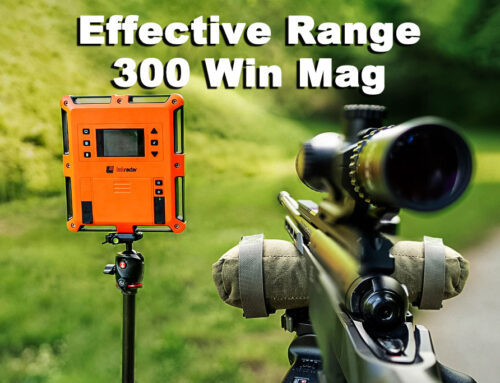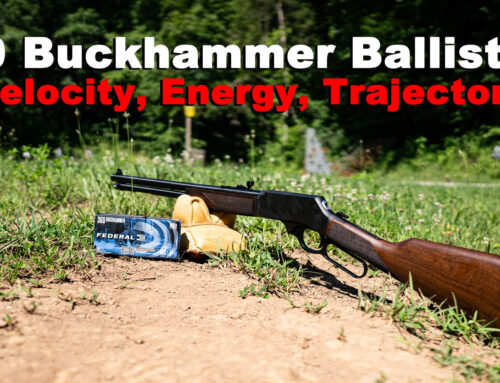Shooters commonly use full metal jacket bullets during range training and other non-life threatening activities. Ammo companies make full metal jacket or “FMJ” bullets to ball-up when. They don’t expand when they hit a soft target. This makes FMJ a poor choice for self-defense but a cheap option for shooters looking to practice with bulk rounds.
Want to learn more?
Keep reading.
Full Metal Jacket History
Eduard Rubin, a Swiss mechanical engineer and colonel invented the full metal jacket (FMJ) projectile in 1882. Notably, while the Hague Convention called for a ban on the use of expanding projectiles in international warfare, it was created more than a decade after the introduction of the already compliant FMJ.
FMJ vs. JHP
The FMJ’s great ubiquity makes it the “bread and butter” bullet of sorts. FMJs are among the most cost-effective bullets available on the market. They’re much cheaper than hollow points intended for self-defense. As we alluded to earlier, the key difference between the two is that the FMJ should not expand as it penetrates its target. For that reason FMJs are less than ideal for personal protection — not simply because it won’t create a wider wound channel that is more capable of quickly debilitating a threat, but also because it has a greater tendency to overpenetrate its target. Ideally, your shots will not put an innocent bystander at risk should they happen to be directly behind your assailant when you fire in self-defense.
What’s An FMJ Made Of?

One of the more common training ammo options available, Federal’s 115 grain 9mm ammo is reliable and cheap for range training.
A gilding metal jacket nearly universally comprises the lead core of most FMJ ammo. Manufacturers. Manufacturers make that jacket out of copper typically. However, you may occasionally find military surplus ammo with cupronickel jacketed projectiles, and even bullets jacketed with steel. 22 LR ammunition often sports a copper plated projectile, although it is not an FMJ by strict definition.
The outer layer of gilding metal on an FMJ considerably strengthens the bullet. This promotes far more reliable feeding, particularly in a semi-automatic firearm. It also prevents deformation during the intense pressure created during ignition so that the bullet may fly straighter downrange. An FMJ also has a tendency to preserve a weapon’s accuracy for longer in between cleanings. Soft lead will gradually leave a film of residue on a bore’s riflings, impacting their ability to generate rotational stability, but harder metal fouls a bore considerably less.
Typically, the gilding jacket does not enclose the base of the bullet. In such instances hot propellant gasses are able to access the lead in the base of the core, aerosolizing it. Shooters who are concerned with their respiratory health, particularly those who log long hours in inadequately ventilated indoor ranges, may opt to fire total metal jacket projectiles which have jackets that encapsulate the lead core in its entirety.
FMJ Derivative Bullet Types
Many types of bullets aren’t FMJs by definition, but still employ a partial jacket to benefit performance. A soft point bullet would have been an FMJ but for the core exposed at its tip; the jacket promotes more certain penetration and controls the mushrooming effected by the soft, exposed core. A jacketed hollow point bullet works similarly, where its jacket both staves off lead fouling while subsequently controlling expansion. To be a true FMJ, you must take that “F” very literally.
The designation “FMJ” does not dictate the shape of the bullet. An FMJ may have a pointed nose, flat nose, or a truncated cone profile. All of these convey certain characteristics to in-flight and terminal performance. An FMJ may also sport a boat tail, a tapered base which measurably improves the bullet’s ballistic coefficient to promote a flatter trajectory and greater insensitivity to the influence of crosswinds. If an FMJ deviates substantially from the shape it most commonly takes, additional letters in its name will indicate as such.
TMJ vs. FMJ
A TMJ bullet is a bullet with a total metal jacket. In this case, the entire bullet is covered in a jacket rather than just the portion that protrudes from the casing.
Manufacturers make TMJ ammo to reduce lead exposure to shooters and potentially increase reliability. In terms of function, TMJ bullets perform nearly identically to FMJ.
CMJ vs. FMJ
If you see CMJ on a box of ammo, that means it has a complete metal jacket. A CMJ is very similar to a total metal jacket and again, these bullets perform the same way an FMJ load would. They do not expand upon impact with a target.
Why Choose FMJ Bullets?
 Given their attractive pricing, FMJs are highly popular for recreational shooting and target practice. If you would like to tone up your performance with your self-defense weapon, training with FMJ ammunition will be far easier on your wallet than the jacketed hollow points you would utilize in a life or death situation. There are certain lines of FMJ ammo made to closely mimic the performance of self-defense ammo. This provides more realistic feedback on how your weapon will perform when you truly need it.
Given their attractive pricing, FMJs are highly popular for recreational shooting and target practice. If you would like to tone up your performance with your self-defense weapon, training with FMJ ammunition will be far easier on your wallet than the jacketed hollow points you would utilize in a life or death situation. There are certain lines of FMJ ammo made to closely mimic the performance of self-defense ammo. This provides more realistic feedback on how your weapon will perform when you truly need it.
The FMJ is available in virtually any caliber you could imagine. If you can find only one type of cartridge for a less popular firearm, the odds are that it will have an FMJ projectile. The FMJ’s versatility makes it always good to have on hand. Have a pile of them ready for future target practice, and take comfort that you’ll be better prepared for an emergency as well!





Leave A Comment